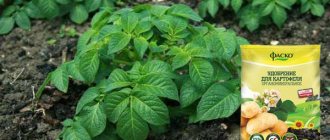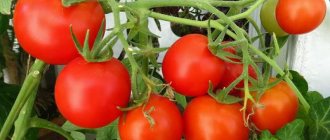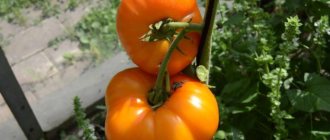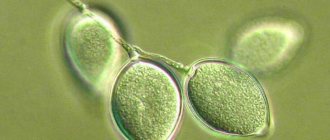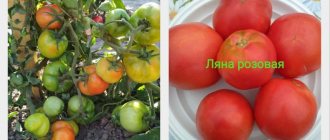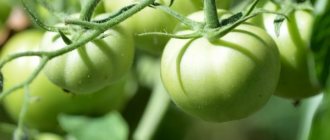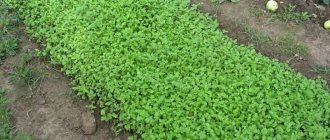The soil in greenhouses is quickly depleted, making it unsuitable for growing garden crops, especially tomatoes. The latter are quite demanding on the composition and structure of the earth. To get a high yield of tomatoes, the soil in the greenhouse must be prepared in advance, in the fall (preparation for planting tomatoes). The set of measures includes both general procedures - disinfection, cleaning of plants, and special ones - application of the necessary fertilizers, green manure, liming. The nature of the soil is of decisive importance. It is necessary to take into account the composition of the soil, acidity, and structure - heavy, light, sandy soils.
What should be the soil for tomatoes?
The greenhouse provides optimal and stable conditions for the growth of tomatoes: soil moisture, ground and air temperature, the required amount of light, correct and modern watering. But there is another component of a large harvest - suitable nutritious soil. If in a fairly large garden you can swap crops and be satisfied with regular feeding, then special measures are needed in the greenhouse. In order for tomatoes to sprout in the spring and ripen quickly, it is necessary to take care of soil suitable for planting in the fall.
Types of soil.
The soil prepared in the fall has a composition different from the soil mixture used for growing seedlings. Particular attention should be paid to the acidity of the soil. It is usually regulated by the addition of peat.
Soil for tomatoes can be of several types:
- with a predominance of humus - rotted leaves;
- with a larger proportion of turf;
- with a predominance of manure;
- mixed type.
A prerequisite is the presence of earthworms. They transform soil components into an ideal fertilizer - vermicompost, which significantly improves plant growth.
Which one is considered unsuitable?
Tomatoes of any variety, including Oxheart and Kumato, although they are not particularly demanding crops, are very sensitive to the composition of the soil. In addition, the greenhouse limits the natural capabilities of the earth. The land here is quickly depleted and becomes unsuitable for growing garden crops. Accordingly, the gardener is forced to compensate for the “aging” soil by replacing it with new fertile soil.
There are many requirements for the soil mixture:
- the soil used for the greenhouse should not contain residues of other plants, so it must be cleaned before use;
- It is prohibited to use soil that has been treated with pesticides less than 1 year before planting tomatoes;
- It is not allowed to use soil contaminated with parasitic insects, remaining after the death of plants due to disease, and so on;
- the soil should have an acidity of about 6.5. Both acidic and alkaline soils do not contribute to the harvest;
- the presence of vermicompost is a prerequisite for a greenhouse;
- loose structure - dense, clayey soils are not allowed for use. If necessary, loosening additives are added to the soil.
The higher the tomato bush, the less sensitive it is to lack of moisture and the more dense the soil can be used. For low-growing bushes, only the loosest soils are suitable - with the addition of vermiculite and perlite.
Characteristics of soil for planting tomatoes
The best soil for tomatoes in a greenhouse should be loose and retain moisture well. But at the same time, these are not the main indicators that you should rely on when preparing a greenhouse in the fall. There are a number of requirements that affect the development and condition of the plant:
- the soil should not contain remains of other plants;
- The virgin soil on which it is planned to grow tomatoes should not be treated with chemicals or toxic drugs for at least 1 year before planting;
- checking for the presence of parasitic insects and diseases;
- the plant will fully develop at an acidity level of no more than 6.5 pH;
- for the full growth of seedlings and the appearance of ovaries in the required quantity, there must be vermicompost in the soil;
- tomatoes, as well as cucumbers, are planted in soil that contains sand and other loosening additives.
Of course, a garden under a roof cannot have all the above characteristics. And even if you take good care of the land, it is not a fact that the previous owners of the summer cottage did not leave “unpleasant surprises” for you in the form of whiteflies, aphids and other harmful insects.
Preparing the soil for tomatoes in the fall in a greenhouse can be done on your own. If this work seems overwhelming to you, then specialized stores can help you.
VIDEO: How to make the soil in a greenhouse fertile
Recommended soil composition
A distinct feature of greenhouse soil from that which is located in the open air is that it quickly “ages” and wears out. And the reserves of nutrients in it “go away” much faster than in an open garden. It is for this reason that preparing the soil for tomatoes in the fall is a very important stage in growing this crop.
Planting seedlings in prepared soil
The greenhouse should be arranged in such a way that it is possible to replace the old soil with new one. It is also advisable to equip the structure with a removable roof in order to completely dismantle it for the winter, allowing access to precipitation.
Autumn soil preparation is characterized by a slightly different soil mixture composition than for growing seedlings themselves. So, in order to grow adult seedlings, you need to use a different type of land. This is all the more important because peat is highly acidic. It is used only as an additional component in the garden.
As a rule, every gardener has all the components necessary to prepare the soil for tomatoes in the fall at their summer cottage. And in the absence of such, they can be easily purchased at any agricultural store.
Depending on the main components and their quantitative shares, the soil can be:
- with a predominance of manure;
- rich in humus (rotten leaves, manure);
- with a predominance of turf soil;
- mixed.
The presence of earthworms is a must. The vermicompost they produce is the best fertilizer and the best microflora for the further growth of seedlings.
Worms are an obligatory guest in greenhouses and hotbeds
Preparation of fertile soil
How to fertilize the soil in a greenhouse in the fall? You can prepare a place for planting tomatoes on your own. The following components will be required:
- garden or greenhouse land in which crops have previously been grown;
- humus one year old;
- rotted plant tops;
- compost;
- old branches;
- sand;
- sawdust;
- peat bog
The soil should be prepared in early September so that seedlings can be planted in it after winter. There is an opinion that in the spring you can also actively fertilize with chemicals. However, this is not entirely correct. Of course, you can purchase special solutions, thanks to which the culture will quickly grow and develop. But as practice shows, preparing the soil for tomatoes in a greenhouse in the fall is most preferable. The fact is that each solution has side effects that can produce results on the fruit or the plant itself. The period from autumn to spring will allow you to neutralize the “side effects” and not harm the crops.
Fertilization using the above components must be carried out according to the following scheme:
- Removing the top layer of virgin soil in a greenhouse. It is necessary to go deeper by at least 40 cm.
- Laying the base layer - these will be old branches that need to be chopped with an ax.
- Next we will add a layer of sawdust.
- The next layer is weeded weeds.
Tops from garden plants are not suitable for fertilizing greenhouse soil, as this can lead to the growth of other vegetation.
- It's time to lay out a warm bed and put a layer of manure at least 10 cm thick. In the absence of manure, you can use peat.
- Part of the fertile soil becomes the final layer of soil in which planting will take place in the spring season.
The procedure for assembling a “warm” bed
The remainder of the manure, peat and other components that were used to fertilize the digging in the fall can be left for the next season.
Preparing virgin soil for tomatoes
All components of the greenhouse soil must be thoroughly mixed. To best prepare the ground, you need, if space allows, to spread thick oilcloth or polyethylene next to the greenhouse. All the necessary components are laid out on this material and mixed with a shovel. Just be extremely careful, because you can break through the polyethylene and not exactly the components that are necessary for full growth will get into the soil.
Autumn, prepared soil is thrown onto the beds with a shovel and carefully leveled with a rake. If there is little nitrogen in it, then in the fall you need to fertilize the soil in the greenhouse by sowing mustard, oats, and legumes. And if parasites are found in the soil, then disinfection is the only way to eliminate them.
Treatment for parasites
There are many drugs that can be used to get rid of “uninvited guests” in the garden. If you do not resort to special means, then any fungal disease will definitely “stick” to the seedlings in the spring.
Preparation
Tomato greenhouses are mainly used for early harvest. In this case, tomato seedlings are planted in a greenhouse as soon as the air and soil temperatures allow it. Accordingly, the soil should already be ready by this time.
It is advisable to carry out all necessary preparatory work in the fall. In this case, you should take into account the type of soil, the characteristics of the crop grown in this area before tomatoes, the variety of tomato, the typical weather conditions of the region, and so on. Read how to grow tomato seedlings at home here.
Autumn soil preparation includes applying fertilizers and loosening the soil.
Predecessors
Precursors for tomatoes are not of fundamental importance. However, in a small greenhouse area it is worth taking this factor into account.
It is preferable to plant tomatoes in areas where they grew:
- cucumbers, zucchini;
- cauliflower, celery;
- legumes - peas and beans;
- carrot;
- dill.
It is undesirable to use areas where the following were grown:
- nightshades - potatoes, eggplant;
- pepper of any kind;
- onion.
You can find out how to tie tomatoes in a greenhouse in this material.
You should not plant tomatoes in the same area. No matter how different the varieties are, they require the same nutrients, so even with proper feeding, the land is quickly depleted.
Tomatoes require soil enriched with nitrogen. For this purpose, oats and white mustard are sown in the plots in the fall: these crops contribute to the accumulation of nitrogen in the soil.
White mustard and Shrovetide radish are also sown in the soil for disinfection. At the same time, maximum sowing density is achieved. These plants are quite capable of protecting future seedlings from fungal infections, late blight, and destroying harmful bacteria. Insufficient tillage of the soil before planting a crop leads to the development of plant diseases, so the soil must be disinfected with potassium permanganate.
Rules
Soil preparation in a greenhouse is largely determined by its composition. However, there are also certain general recommendations related to the operating features of the greenhouse.
- In September it is necessary to carry out a complete cleaning of the plants. It is advisable to pull them out by the roots. You should be especially careful in cases where diseased plants appeared in the greenhouse in the summer: fragments of bushes remaining in the ground can become a new focus of the disease.
- Remains of weeds and fallen leaves should be removed. Plant waste must be burned and cannot be used as a raw material for compost.
- In September, it is recommended to sow mustard, Shrovetide radish, and grain crops throughout the entire soil in the greenhouse, and not just the areas for tomatoes. Crops of this kind contribute to the accumulation of nitrogen in the soil. And it is necessary for all greenhouse plants from cucumbers and tomatoes to strawberries and cabbage.
It is recommended to sow mustard not only in the fall, but also in the spring, before cultivation. It has a disinfectant effect and goes well with other garden crops.
- After cutting mustard or cereals, the ground is soaked in a disinfecting solution. The most commonly used is phytosporin.
- All garters, pins, and trellises for plants must be removed for the winter.
- It is recommended to let the soil for tomatoes freeze well. To do this, the greenhouse is left open in the fall. In any case, the entire covering is removed from the film greenhouse; if possible, the glass fragment above the area with tomatoes is dismantled. Only after freezing is it possible to cover the soil with a layer of snow.
- Manure, if necessary, is applied only after the soil has been completely cleaned and at a temperature no higher than +10 C. The soil is left to lie for up to 4 days, and then dismantling of the greenhouse structures begins.
Mullein or cow manure is a natural fertilizer that is applied after the land has been completely cleaned
Fertilizers for tomato beds
The ideal soil for tomatoes has the following composition: 60% peat, 20% sand, 20% compost. Some gardeners mix such soil themselves, then remove the top layer of soil in the greenhouse and replace it with the prepared mixture. However, this work is very labor-intensive, so most greenhouse owners simply try to modify the existing soil.
There are many types of soil: rocky, clayey, sandy, peat, and so on. Typically, a gardener does not need to know the exact content of components in the soil. It is enough to roughly determine the category - heavy, light soil, and establish its acidity.
The category is determined as follows: having slightly moistened the soil, roll it into a sausage about 3 mm in diameter and try to roll the sausage into a ring.
- If you do this simply, then the soil in the greenhouse is heavy - clay, peaty. Such soils have difficulty warming up, so seedlings have to be planted later than under the same weather conditions, but in sandy soil. Clay soils are acidic and require liming.
- If the sausage turns out, but the ring is cracking, it means that the gardener is dealing with medium soil - loam. Heavy loam has the ideal acidity for tomatoes. Light ones have a pH slightly higher than necessary and require the addition of peat. Loam holds water well, which reduces the need for watering, and warms up faster than peat soils, but slower than sandy soils.
- Even if you can’t make a sausage, the soil is very light, loose, like sandy loam. It doesn't hold water well, but it gets wet easily when watering. However, it is necessary to fertilize sandy loam and sandy soils more often, since beneficial substances are easily washed away by water. The soil reaction is alkaline and requires oxidation. Sandy loam warms up very quickly, which allows you to plant tomatoes earlier.
Read about tomato hybrids for greenhouses here.
It is better to prepare heavy clay soils in the fall. Loam, sandy loam, and sandy soils can be prepared in the spring 1–2 months before planting.
Accordingly, different procedures are carried out for different soils and different fertilizers are introduced.
- Liming is carried out both in autumn and spring. Lime helps reduce acidity and also serves as a source of calcium and magnesium. The mixture must be selected taking into account the nature of the soil. Thus, slaked lime is very active, which can cause very significant fluctuations in pH, and the dolomite mixture contains too little magnesium and cannot serve as a source of the trace element. Lime is placed to a depth of 30 cm.
- Green manure is the already mentioned sowing of mustard, legumes or cereals in a tomato area. These crops saturate the soil with exactly the microelements that are required for the successful growth of tomatoes.
- Adding ash - to obtain it, weeds, pruned old branches, even tops are burned. Care should be taken to ensure that fragments of tomato tops do not get into the raw material, as the latter may contain harmful bacteria. Ash is added while digging the soil.
- Application of organic fertilizers - manure, humus, compost. Fertilizers are applied during digging. The frequency depends on the nature of the soil: clay soils should be fertilized once every 4 years, suspensions - once every 2-3 years.
- Soil amendments – what tomatoes need most is potassium and nitrogen. Accordingly, in the fall, substances are added to the soil to provide the required concentration of microelements. The standard mixture for medium soils is as follows: monophosphate at the rate of 40–50 g per 1 sq. m, double superphosphate – 20–30 g per 1 sq. m, or granulated superphosphate - 35–40 g per 1 sq. m.
Ammoniated superphosphate is not used as an autumn fertilizer. During the winter period, nitrogen in the soil is lost. But enriching the supplements with drugs containing potassium - potassium magnesium, for example, will be useful. This article will tell you how to grow tomatoes in a polycarbonate greenhouse.
An excellent method for preparing the soil is to temporarily convert your greenhouse into a chicken barn. By the time Libra arrives, the soil will be fertilized, soft, loose and completely free from parasitic insects. After moving the chickens out, you just need to remove the litter and you can plant the tomatoes.
Laying out the beds
At the end of May, in the prepared area it is necessary to make beds for tomato seedlings. To do this, form small trenches, directing them from north to south. The distance between the beds should be at least 1 m, and between the rows - about 70 cm.
Make sides up to 5 cm high for each bed. For convenience, some gardeners divide the beds into sections with a width of 50 cm, using the same sides. You will need to plant 2 tomato bushes in each section. This planting scheme prevents water from spreading when watering seedlings.
After the preparatory work is completed, you can begin planting tomato seedlings in open ground.
Tilling soil/land for tomatoes in a greenhouse (autumn, spring)
For a good harvest, not only the composition of the soil is important, but also its structure. This requires mechanical actions, such as digging up soil. However, in some cases – heavy clay soils, “old” soil, this is not enough.
Screening
Sifting is used both for the soil itself and for humus. In this way, it is possible to get rid of large lumps, small pebbles, unnoticed plant fragments and other things. In addition, sifting allows you to saturate the soil with air and make it as loose as possible. Such soil allows moisture and air to pass through, providing nutrition to the roots. And replanting plants is simplified, since the loose soil does not injure the roots of the seedlings.
When preparing the soil for planting a crop, it must be sifted
Temperature
To destroy insect larvae and spores of pathogens of various diseases, the soil is subjected to heat treatment. There are several ways to do this.
- Exposure to low temperatures is a must for greenhouse soils. The ground is allowed to freeze, and only then covered with snow if the greenhouse is open for the winter, or the cover is returned to its place.
- Contrast treatment is considered more effective. In this case, the soil in containers is periodically taken out into the cold, and after a couple of days it is returned to the greenhouse.
- High temperature treatment - this procedure is performed only in the spring immediately before planting. Water the soil with boiling water, approximately 1 bucket per 1 square meter. m. In this way, they not only destroy microorganisms, but also warm up the soil.
Treatment with hot water helps to wash out microelements and beneficial microorganisms from the soil, especially if it is light - sandy loam, sandy. After this procedure, it is recommended to add an additional dose of fertilizer.
conclusions
- The soil for a garden bed in a greenhouse is quickly depleted. This problem can be solved either by replacing the soil with new soil, or by enriching and processing the old one.
- Preparation includes not only enriching the composition, but also changing the structure. To do this, dig up the soil and sift it if necessary.
- Land enrichment can be done in different ways: adding manure, humus, adding ash, sowing cereals or legumes.
- A mandatory element of preparation is soil disinfection. You can use special antiseptic solutions or sow white mustard along with cereals.
- Treatment with low temperatures - the greenhouse is left open and the covering is partially dismantled in order to allow the soil to freeze, and only then cover it with snow.
- Depending on the type of soil, additional procedures are carried out in the greenhouse: liming, adding peat to increase acidity, additional loosening for clay soils.
Also read about high-yielding tomato varieties at this link.
Sowing green manure
After tomatoes, it is better to plant green manures belonging to the legume family, such as mouse peas, vetch or lupine. They enrich the soil with nitrogen, which plants need for good growth.
You can also sow mustard and phacelia. Both types of plants will protect the soil from the development of harmful bacteria and fungal infections and prevent the appearance of pests. When green manure grows to 15-20 cm, mow it and mix it with soil.
- Author: Zimina Tatyana
Rate this article:
- 5
- 4
- 3
- 2
- 1
(2 votes, average: 1.5 out of 5)
Share with your friends!

